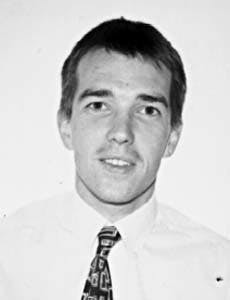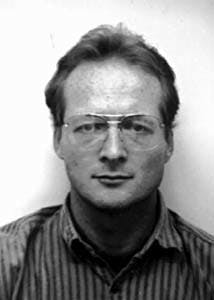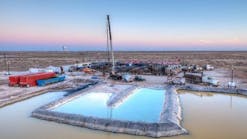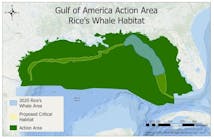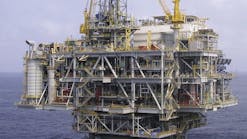Colin A. Tait
Halliburton Energy Services
Houston
Kenneth H. Hamlin
Halliburton Energy Services
Aberdeen
The use of well-calibrated depth control sensors, good bookkeeping practices with the pipe tally, and better operating practices can help eliminate depth measurement errors on logs produced from logging-while-drilling tools.
Other factors that help eliminate depth errors include advances in tool technology and mathematical corrections for tensional stretch, ballooning effect, and thermal expansion of the drill pipe.
Accurate depth measurements are required to achieve wire line-quality logs with logging-while-drilling (LWD) tools. Without good depth control, pay zone thickness measurements can be in error, correlation between LWD logs and wire line logs can be poor, and subsequent LWD runs may produce data at differing depths.
Critical depth control problems include nonlinearities caused by the draw works, heave effects, and drill pipe stretch and compression. An interdisciplinary team investigated the causes and various solutions to these problems and developed solutions comprised of improvements in hardware, rig site operating procedures, and calibration techniques.
Depth measurements are often taken for granted but are some of the most critical measurements gathered during a well operation. Without accurate depths, many drilling and logging measurements are of limited use. As with any measurement, depth measurements are subject to error.
Unfortunately, because of the drilling environment, these errors can be very difficult to correct. Traditionally there has been a perception in the oil industry that measurement-while-drilling (MWD) depth measurements have a correlative accuracy only.1 This notion resulted from the fact that MWD was mainly providing a directional-only service, and therefore, the driller's depth obtained from the pipe tally was sufficient.
LWD, however, requires wire line accuracy for logs to be accepted. LWD systems are arriving at accuracies comparable to wire line systems when correct procedures are followed to account for factors that affect depth control.
Depth measurements are basically obtained through measurement of the block position; the block moves in tandem with the pipe in the hole. After the block position is obtained, the depth is calculated and tied to the LWD data. The data can be in two forms: real-time data or memory data.
For real-time data, a depth is attached to each data point transmitted from the tool. To obtain the sensor depth, a tool offset, which is the distance from the bit to the sensor, is usually subtracted from the bit depth. The tool offset must therefore be measured correctly to ensure correct sensor depths.
The memory data are assigned a depth by correlating the time a depth was recorded with the time a data point was recorded.
The important factor here is that both the tool time and the surface time match and that sufficient time samples are stored to keep interpolation errors to a minimum. To ensure the surface and tool clocks match, they are synchronized before the tool is run into the hole and checked at the end of the run.
Depth errors
There are three critical areas in LWD depth control where, if correct procedure and techniques are not followed or acted upon, problems can potentially arise:
- Surface calibration
- Depth corrections resulting from drillstring elongation or pipe compression
- Correlation between the sensor data and the measured depth (Fig. 1 [52156 bytes]).
The first class of errors can be broken down into two parts: the driller's pipe tally and calibration of the block position. Both, if not corrected, will affect the absolute and relative depth of the tool.
The absolute depth is the true measured depth of the tool. Relative depths may not have the exact depth position correct, but the distance between formation markers is correct. These depths are critical when forming opinions on depths of reservoirs.
The pipe tally has two potential errors associated with it. First, the actual measurement of the pipe will always have the potential for errors. Although the measurement of drill pipe from shoulder to shoulder is standard, consistency in readings will vary with different people measuring the pipe. Second, bad bookkeeping with the pipe tally often results in differing depths between the LWD operator and the driller. Both of these factors can be avoided through good operational procedures.
Inaccuracies in block position calibration and heave correction can also have a significant effect on both relative and absolute depths. Because of the placement of equipment and the type of equipment used, heave may not be properly compensated for, hence affecting the absolute depth measurement. Correct calibration of equipment to measure the block position is essential to provide accurate relative depth control. Without this calibration, the nonlinear response of the draw works can cause large errors in relative depth measurements. This effect is commonly called the "rubber band" effect.
The second type of error can affect depth control at any point but is most common during drilling of horizontal or highly deviated sections of wells. In these cases more of the bottom hole assembly lies on the bottom of the hole, and weight-which is transferred to the drillstring at surface-is not necessarily transferred to the bit. Environmental factors, such as pressure effects, tensional stretch, thermal expansion, and drag effects, can then occur. If not corrected, these effects will distort a log.2
The third class of errors deals with the processes and techniques which are used to correlate measured depths to real-time or memory data to produce a log.
There are many instances where depths may have been measured correctly in real time, but during log production, the response seems incorrect. In these cases operator error and poor operating procedures can make a seemingly successful LWD run produce an incorrect log.
Surface measurements
To ensure an accurate driller's pipe tally, the pipe must be measured in a consistent fashion to produce accurate depth measurements. Once this has been achieved, the pipe tally can really only then be used as a reference to ensure that the LWD depth is close to the driller's depth. This results from the problems previously mentioned with bad bookkeeping and drill pipe measurement that will result in small differences.
An example is that of a driller inserting a 90-ft stand of drill pipe to the pipe tally book while the LWD operator will only insert a 30-ft length of drill pipe. This error is easily correctable but can create confusion and doubt over what the true measurement depth is.3
A more severe inaccuracy that can occur at surface is caused by the calculation of the block height position and the correction used for heave.
There are many different makes of sensors used by the various service companies. They generally fall into two categories: direct line sensors (field-calibrated wheel or precalibrated wheel) and kelly bottle systems.
Direct line sensors
Field-calibrated wheel sensors are attached to the rotary shaft of the draw works or to the geolograph spool. The encoder plate creates digital electrical pulses. The pulses, when decoded, offer a direction and a value of the number of measurement units. Attaching it to the draw works ensures that any movement of the draw works will be matched by the sensor.
The sensor needs to be calibrated, and if the calibration does not correct for the nonlinearity attributed to the spool, then an error will occur with relative depth control. The nonlinearities in the spool are caused by the varying effective spool diameter because of increases and decreases in the drum wraps as the cable is spooled in and out. This behavior creates a differing gradient for each wrap, and when plotted over one stand of pipe, a bow-type response is produced. If this response is not considered, relative depth control will be lost.
To correct for the nonlinearities, one can use a multiple-point calibration. A multiple-point calibration, as the name suggests, acquires multiple sensor readings at measured block heights. This is a quick and extremely effective way of producing an accurate calibration.
Fig. 2 [39346 bytes] illustrates the bow-type response gained by the multiple-point calibration compared against a commonly used two-point calibration of the block. The plot at the bottom of Fig. 2 [39346 bytes] illustrates the size and location of the error for both calibrations. Producing a flat error response, it is obvious that the multiple-point calibration follows the true draw works response.
The two-point calibration, however, produces a significant error as the bow-shaped error testifies. Fig. 3 [32567 bytes] shows in more detail the size of the error. For the two-point calibration, the error relates directly to the differing wrap gradients shown at Points A, B, C, and D. In this case the largest error was 4.37 ft. The multiple-point calibration, however, shows an extremely small error. In this test the error was 0.12 ft at one spot, corresponding to Wrap C. This error can be further reduced with more sampling of the sensor output. In this test, 20 samples of the sensor were taken at 5-ft intervals.
When used with a data set, relative depth control is quickly lost without a correction for the nonlinearities (Fig. 4 [36174 bytes]). This error created by the two-point calibration is called the rubber band effect because of the depths being correct at the start and end of a joint but significantly different in the middle. If the rubber band effect were not corrected, the whole log would have a consistent error between connections and would make the log quality extremely poor.
The direct line measurement is another very accurate means of gathering depth measurements. The equipment is attached to a geolograph line where the wire can be spooled between three rollers. One of the rollers is attached to a sensor where one complete turn of the roller is equal to some preset value, eradicating the need for calibration. It is necessary to prevent slippage that will occur with the rollers if there is not enough tension in the line. If this occurs, depth control will then become a problem. Also, should the sensor's preset calibration fail, the sensor's measurements are useless.
If the sensor is not attached to the flywheel in the crown, then a nonlinear measurement may be obtained. Another major drawback is that this method requires a functional geolograph or cable which may or may not exist on every rig.
Kelly bottle systems
The kelly bottle system can give extremely accurate depth measurements. It measures variations in the hydrostatic head of a column of water attached to the kelly and anchored to the drill floor.
These pressure variations are converted to an electrical signal which is then converted to a depth according to the gradient which is specified by the calibration. The kelly bottle is attached to the swivel or to the top drive. A two-point calibration is all that is needed because the change in pressure is linearly related to the change in block position.
There are problems with this system, which involve high maintenance and the way that readings are very easily affected by weather and drilling operations, requiring the use of high-damping filters on readings to produce a stable measurement.
Heave compensation
Heave, which is caused by wave movement against floating rigs, has a major effect on surface calculations of block movement. Heave compensation is a difficult endeavor because of the nature of the drillstring compensators (DSC).4
A DSC compensates for the movement of the vessel by use of pneumatic springs, which react to the change in the vessel movement and keep the drillstring stationary.
The first challenge in heave compensation is deciding on a reference point without creating offset errors. There are two possibilities: the sea bed or the mean sea level. Whatever is chosen, it is still difficult to relate the data to that fixed position.
There are several methods using differing sensors to get a heave reading. As LWD requires tripping, as well as drilling data, it has been found that a combination of two sensors has proved reliable.
The first sensor, an uncompensated kelly bottle, is placed on the rucker line. This uses the sea bed as the fixed point, enabling the varying distance of the rig floor to the sea bed to be measured.
The second sensor, a field-calibrated wheel, measures the rig movement in relation to the drill pipe, which the DSC is keeping stationary. A combination of both sensor readings, passed through suitable mathematical algorithms, produces a heave compensated measurement.
An alternative to the rucker-line arrangement is the use of direct line sensors placed on the wheels that guide the riser lines up to the drillstring compensator. These sensors measure the movement of each line and, by manipulating each line's response, a heave measurement is obtained.
Problems with this method are the extra sensors needed and the fact that the line movement is not linear. The nonlinear response would then require a calibration to validate the sensor reading.
Depth corrections
Having calibrated the surface components, the next area that has to be addressed is the subsurface. Here, factors such as thermal expansion, pipe compression, and pipe stretch all affect the LWD readings. Unless corrected, these errors will lead to both poor relative and absolute depth control, which will be easily recognizable when an LWD log is compared to a wire line log.
One method for depth corrections uses equations developed by Rogaland Institute as part of the Improved Drilling Data (IDD) project.5 Such equations require that the surface measurements be accurate. Sensors are required to record the hookload, standpipe pressure, block height position, and rotation speed. From these sensors, parameters and variables can be updated. Not all the input data are derived from sensor readings, and these additional data have to be input manually.
The IDD project specified conditions that affected LWD depth control. These conditions were broken down into three main areas:
- Pressure effects such as the ballooning effect
- Tensional stretch of drill pipe resulting from its elasticity
- Thermal expansion of drill pipe.
The three conditions affect both the absolute and relative depth measurements, with penetration rates also being affected. By applying the corrections stated in the project, it is hoped that absolute depth control accuracies can be achieved with an estimated uncertainty of about 0.03%.
A new innovative approach to correct for downhole conditions uses a weight-on-bit tool. The tool is placed in the bottom hole assembly near the drill bit so that the sensor can give a more accurate reading of the true weight on bit. This value can then be transmitted up to the surface by conventional means. Depth control can then make use of the data by checking if the weight seen at surface is actually being transferred to the bit. If it is not, but the surface sensors are indicating block movement, then the depth would not have been updated.
Using current systems, the raw depth would be recorded, and then a correction would be applied to achieve a corrected depth. For this scenario to operate, high data rates from the weight-on-bit tool would be necessary. An updated period of every 5 sec should be sufficient to give valuable and accurate data for depth control decisions to be valid.
Another possible solution to correct depths downhole involves using the correlation of two identical sensors spaced a known distance apart on a tool. Each sensor should measure the same data point at the same depth. If they do not, post-processing depth correlation could be used to match the points and hence correct the log.6
Often drilling rates are considerably lower than wire line logging rates, and a data point is measured numerous times. This is one of the main reasons that LWD operators have to weight their readings to compensate for the "over measurement" of a data point.
Therefore, a tool with equivalent sensors should read the same point in a formation several times. This should prevent any error being produced through poor detection of a data point, which could lead to incorrect depth correlation.
Quality control
LWD logs are acquired over extended time periods, starting and stopping many times over the course of the well. Failure to recognize problems in the initial acquisition of depth data can make all sensor data assigned to depth inaccurate. Many of the potential problems are eliminated if the depth tracking is well calibrated.
The rubber band effect is a classic example of poor surface calibration affecting log quality. Inaccuracy in depth tracking may also appear as spikes or gaps in the log. These effects normally appear through horizontal or high-inclination sections of a well.
Fig. 5 [34300 bytes] illustrates two common problems in LWD depth control. At Point A, there is a difference between the relog data and the real-time drilling data. Before and after this point, both sets of data are back on depth. Point A illustrates a section where string compression has occurred. At Point B, the LWD operator has missed a section of log. This error actually occurred after a short trip, and the operator missed the start of drilling. In both cases, the log was able to be corrected by use of relog sections and trip logs.
Problems such as pipe compression shown in Point A occur more frequently through horizontal and high-inclination sections. This is a result of the increased tensional and elongation stress as well as increased friction applied to the drill pipe as it lies against the side of the borehole. Many LWD operators will use relog sections not only to correct problems they know have occurred, but also to verify that their depth control is accurate.
As Fig. 5 shows, the use of relog sections is a valid method to correct depth control problems. As a rule, through sections of interest to the customer, especially in horizontal sections, the LWD operator should always try to achieve a relog of the section previously drilled. This relog can normally be obtained while the pipe is being back reamed before the connection or when the pipe is being run back down to the bottom after a connection has occurred.
Why not log out?
Logging while tripping out of the hole provides an opportunity to determine what has happened to the formation many hours after drilling. Another attraction to log out is that once total depth has been reached, the LWD operator will be able to produce a complete tripping log to surface.
This has several advantages for the LWD operator. The log can provide the operator with the opportunity to verify that the depth tracking has been accurate. It can also give him information to correct the log should any of the points mentioned previously in this article become apparent. This can be especially valid while tripping out of a horizontal or highly deviated section where depth control problems may have arisen.
Logging while tripping has its own set of problems. It must be accomplished with a constant pull on the drillstring as opposed to a constant speed. To get an accurate log, the pipe must also be pulled at a rate that is determined by the acquisition rate of the tool.
Because the data acquisition rate determines the tripping rate, it is common for logging while tripping to be used only while tripping through the customer's areas of interest, such as the reservoir.
Results
Depth control is reputed as one of the most critical well measurements. To attain high standards in depth control and hence produce a high-quality LWD log, operators must ensure that several key elements bear in place to overcome the errors that can manifest themselves in LWD depth control.
- Good bookkeeping practices to reduce the opportunity of errors arising in the pipe tally are vital to prevent confusion of the measured depth.
- Calibration of the surface sensors to measure both the heave and the block position must be accurate. If not, an error of up to 5 ft per stand of drill pipe can occur. This error is commonly called the rubber band effect and can create consistent depth error between every connection.
- Mathematical corrections for tensional stretch, ballooning effect, and thermal expansion can lead to much improved depth accuracies and hence reduce the error uncertainty of the depth control.
- Improving operating practices to include relogs or tripping logs of important sections can help both in the validation of depths as well as the correction of depths should a problem have arisen.
- It is also believed that advances in tool technology, such as the weight-on-bit tool, and applications of existing technology, engineered to fit LWD needs, can also help in depth control algorithms.
Acknowledgment
The authors wish to thank Halliburton Energy Services for permission to publish this article. The authors also thank Charles Jackson, Kevin Lee, Ian Dowell, Hal DeHaven, Petty Schultz, Herb Illfelder, and the technical services department for their help and encouragement during the development of this article.
References
1. Sollie, F., and Rodgers, S.G., "Towards Better Measurements of Logging Depth," Society of Professional Well Log Analysts 35th Annual Logging Symposium, 1994.
2. Kirkman, M., and Seim, P., "Depth Measurements with Wireline and MWD Logs," SPWLA, Bergen, Norway, 1989.
3. Kyollingstad, A., Horpestad, J.L., Klakegg, S., Kristiansen, A., and Aadnoy, B.S., "Factors Limiting the Quantitative Use of Mud-Logging Data," Society of Petroleum Engineers paper 25319, 1993.
4. Baker, R.J., "Improved Heave Compensation," SPE/IADC paper 21961, 1991.
5. Handeland, T. and Horpestad, J.L., "Status Report for the Improved Drilling Data," Dec. 6, 1994.
6. Allen, D.R., "Collar and Radioactive Bullet Logging for Subsidence Monitoring," 10th Annual SPWLA Logging Symposium, 1969.
The Authors
Colin Tait is a software engineer at Halliburton Energy Services' technology center in Houston. Working with drilling systems, he specializes in LWD/MWD surface system and depth control software.Tait graduated in 1991 from Robert Gordon's Institute of Technology in Aberdeen with a BEng (honors) in electronic and information engineering. He joined Halliburton in 1991 as an MWD field engineer in Europe, the Middle East, and Africa until he moved into the software department in Aberdeen. In 1993, Tait was transferred to his current position in Houston.
Kenneth Hamlin is an LWD/MWD service manager for Halliburton Energy Services in Aberdeen. Hamlin previously worked in Halliburton Energy Services' Houston technology center as a technical services engineer during much of the development of the Path Finder series of LWD tools.
Copyright 1996 Oil & Gas Journal. All Rights Reserved.
